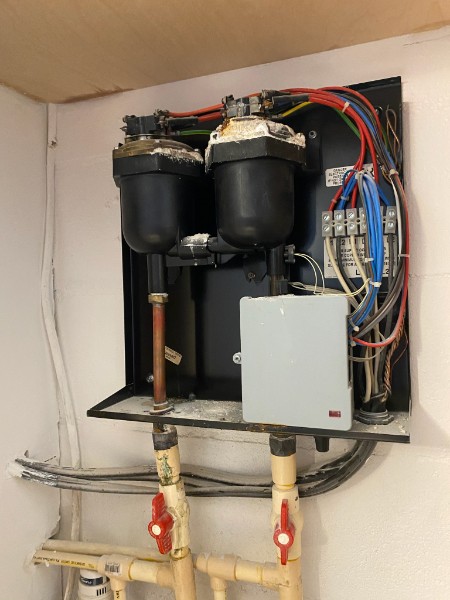How to Unclog Your Toilet
Use this step-by-step guide to get your toilet flowing again
Written by Haniya Rae for consumerreports.org

Image Credit: consumerreports.org
We’ve all been there. You go to flush, but instead of water going down, you see it rising up and up and up. . . . You panic: Did I really use that much toilet paper?
Toilet clogs are a pain to deal with anytime, but during the pandemic, they can really make you panic—you can’t afford to have a nonworking toilet, and you may be reluctant to have a plumber in your house. The good news: “Most clogs you can clear yourself,” says Andrew Chandler, lead plumbing technician at Plumbing in Pink in Greenville, S.C. The key, he says, is usually a good plunge.
Below, plumbers offer their advice on how to clear a toilet clog yourself and when you should call a professional. (As for what not to do, don’t use Drano or boiling water.)
If you’re looking to replace your toilet, see below or check the models in our toilet ratings. One of our key tests assesses how well models flush.
We use simulated waste consisting of 160 solid polyethylene balls, seven sponges studded with No. 10 screws for realistic weight, and nonlubricated latex condoms filled with water. The best in our tests flush it all down in one go; the worst clog with the first flush.
How to Unclog a Toilet Step by Step
1. If you drop something in your toilet—say, a child’s toy—try extracting it first. Don’t force it down with a flush. Even if it carries down the pipes, it still has to move around 100 to 200 feet to get to the city’s sewer. “For a lot of people, once the object is out of sight, it’s out of mind,” says Mike DeSilva, a plumber and president of Plumbing Plus in Poway, Calif. “But this can cause problems later. Use a coat hanger or whatever you can to fish it out.”
A note on wipes: Don’t flush them, even if you see “flushable” on the package. Unlike toilet paper, wipes don’t break down easily and may include adhesives that help them stay taut, and that can cause problems down the line. “They’ll go down,” Chandler says. “But they can totally ruin a septic tank and cost you about $5,000 to $10,000 to fix. If you’re on a city sewer, they’re an extra cost to the city to clean up.” The city’s waste treatment workers have to fish out the wipes and take them to a dump. Likewise, don’t flush paper towels or shop towels.
2. If a wad of toilet paper is stuck, reach for the plunger. First, you’ll need to turn off the water to ensure that the toilet doesn’t overflow while you’re working. Just make sure a decent amount of water is in the bowl so that when you free up the stoppage, there’s water to help move the waste down the drain, DeSilva says.
Place the plunger directly over the bowl drain. Slowly push the plunger down so that it compresses, then vigorously and quickly pull the plunger up and then down while trying to maintain a seal between the plunger and the toilet bowl. You should feel some resistance and suction until the stoppage is released. Raise the plunger. If you see the waste and water go down, immediately turn the water back on and start flushing. If not, keep plunging until the stoppage is completely cleared.
3. If a plunger gets you nowhere, try a toilet bowl cleaner. Pour a small amount of liquid cleaner that’s formulated with hydrogen peroxide as a lime and rust remover directly into the toilet bowl and let it sit for 30 minutes to a few hours. Check to see if chemicals in the cleaner have broken down the waste and your toilet bowl has drained, DeSilva says. Flush once the water has gone down.
4. Get an enzyme cleaner. Enzyme cleaners, such as Green Gobbler, are made of a concentrated mixture of bacteria that break down waste in your toilet but won’t hurt the pipes. You can buy them at home improvement stores. They’re ideal for older homes with cast iron pipes because harsh cleaners such as Drano can corrode metals. Once you pour it into the toilet, let it sit for about 24 hours (don’t flush) so that it has time to work. DeSilva suggests pouring an enzyme cleaner down the toilet a few times a month to maintain a healthy system.
5. Call a plumber. “When you can’t unclog a toilet with a plunger or if you notice a mainline stoppage between the house and the street, you need professional help,” Chandler says. Water coming up in other places, such as in a sink or shower, is an indication that there’s backed-up waste farther in the pipes that you can’t see.
Because of the pandemic, when you schedule a visit, ask the plumber if he will wear personal protective equipment when he comes to your house, and whether he cleans his equipment after each service call. Explain the issue on the phone with the plumber in advance; if you need to talk in person, stay at least 6 feet apart, keep the conversation as brief as possible, and make sure you are both wearing masks. Plan to have your family stay in a separate room of the house while the plumber works, and open the windows for airflow.
What Not to Do
Don’t use boiling hot water. Though it could unclog the toilet, you could end up damaging it. “If you start using too much hot water, you’ll heat up your toilet,” DeSilva says. “Your toilet sits on a drain connection with a wax ring. If you heat it up too much, you might melt that seal.” That can result in a leak at the base of the toilet, and you’ll have to remove the toilet entirely to replace the seal underneath.
Don’t pour Drano down your toilet. Drano is a highly corrosive chemical. It can damage pipes, so much so that they can eventually break apart. If they break, you’ll have a much bigger problem than a toilet clog.
NOTE:
This article was written by Haniya Rae for consumerreports.org. Original article can be read here.
For updates, feel free to follow her on Twitter (@haniyarae)
Original post here: How to Unclog Your Toilet
